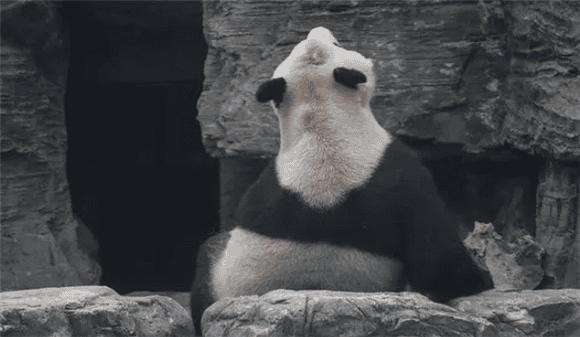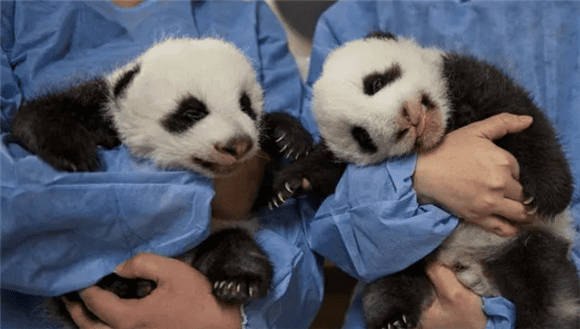The giant panda is a precious and endangered animal, known as a "living fossil" and "China's national treasure". It is also the image ambassador of the World Wildlife Fund and the flagship species for the world's biodiversity conservation. The life span of giant pandas is affected by many factors, the most important of which is the living environment. So, what is the difference between the lifespan of giant pandas in the wild and in captivity?

According to the data, the life span of giant pandas in the wild is 18-20 years. years old, and can be over 30 years old in captivity. Why is this? There are several main reasons:
Food: Giant pandas in the wild almost entirely rely on bamboo to survive. The nutritional value of bamboo is very low, so giant pandas have to spend a long time eating a lot of bamboo every day to survive. life. Moreover, bamboo blooms and dies periodically. Once bamboo dies, giant pandas will face the risk of famine. In captivity, giant pandas can eat a variety of foods, such as bamboo shoots, apples, carrots, corn, biscuits, etc., which are not only nutritious but also have diverse tastes, which can meet the needs of giant pandas.
Diseases: Giant pandas in the wild are susceptible to various diseases and parasites, such as colds, tuberculosis, lungworm, roundworms, etc., which will affect the health and lifespan of giant pandas. Moreover, it is difficult for giant pandas to receive timely and effective treatment and care in the wild. In captivity, giant pandas can receive regular physical examinations and vaccinations. Once abnormalities or illnesses are discovered, they can receive prompt diagnosis and treatment from professional medical staff.
Hunting: Although giant pandas have no natural enemies in the wild, they are threatened by humans. Due to the over-exploitation and utilization of forests and bamboo forests by humans, the habitats of giant pandas have been severely destroyed and fragmented, making it difficult for giant pandas to find sufficient food and water sources, and to communicate and mate. In addition, there are some criminals who secretly hunt or steal giant pandas in order to obtain high profits. In captivity, giant pandas can live in a safe and comfortable environment without worrying about being hunted or stolen.
Reproduction: Due to habitat fragmentation and lack of food, it is difficult for giant pandas to find suitable partners for mating in the wild. Moreover, the giant panda itself is an animal with very low fertility. There are only a few days of estrus every year, and females can only become pregnant during this time. Even when pregnancy is successful, there are high miscarriage and stillbirth rates. Moreover, cubs also face many dangers after birth, such as infection, predation, accidents, etc. In captivity, giant pandas can increase their pregnancy rate and success rate through artificial insemination or natural mating. Moreover, professional care and nurturing can also be provided after the cubs are born.
To sum up, we can see that giant pandas face different challenges and opportunities in the wild and in captivity. In the wild, giant pandas can experience the charm of nature and maintain their wild nature and habits, but they also have to endure various difficulties and dangers such as food shortages, disease attacks, and human interference. In captivity, giant pandas can enjoy human care and protection, have sufficient food and a safe environment, but they will also lose some of their natural fun and free space. Therefore, we cannot simply say which way of life is better or worse, but should give giant pandas appropriate help and support based on their actual situation and needs.

As humans, we have the responsibility and obligation to protect giant pandas. A precious species that allows them to continue to survive and thrive on this planet. We should respect the choices and wishes of giant pandas and not forcefully interfere with their lives. We should protect the habitats of giant pandas and reduce disturbance and harm to them. We should support scientific research and educational promotion of giant pandas to increase people's understanding of and concern for them. We should promote international cooperation and exchanges among giant pandas to enhance their genetic diversity and adaptability. We should create a harmonious and beautiful home for giant pandas so that they can live happily and healthily.
In short, whether in the wild or in captivity, giant pandas are our human friends and partners. We should care for them with love and wisdom and let them share this beautiful earth with us.

 扫一扫微信交流
扫一扫微信交流
发布评论